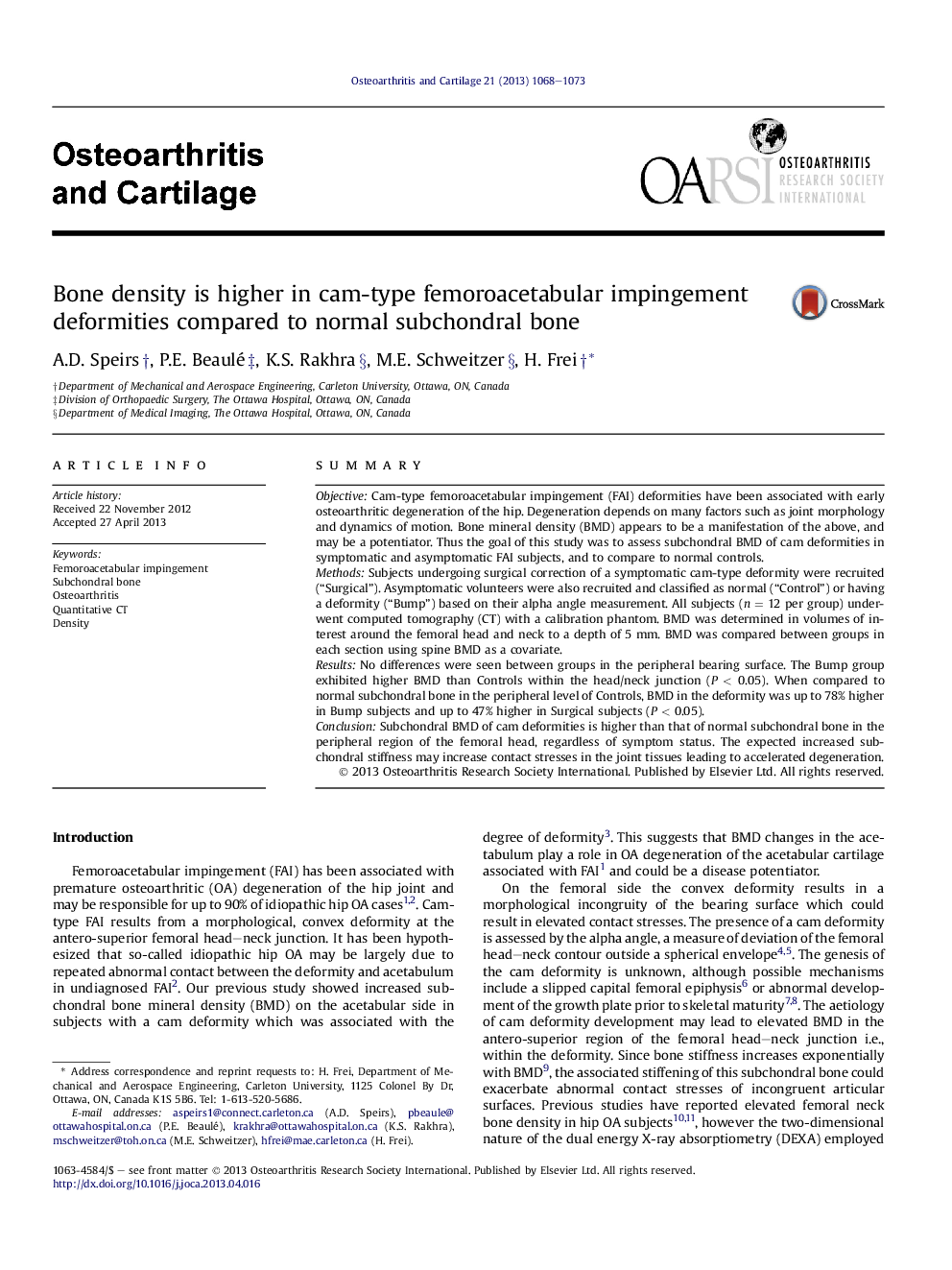| Article ID | Journal | Published Year | Pages | File Type |
|---|---|---|---|---|
| 3379583 | Osteoarthritis and Cartilage | 2013 | 6 Pages |
SummaryObjectiveCam-type femoroacetabular impingement (FAI) deformities have been associated with early osteoarthritic degeneration of the hip. Degeneration depends on many factors such as joint morphology and dynamics of motion. Bone mineral density (BMD) appears to be a manifestation of the above, and may be a potentiator. Thus the goal of this study was to assess subchondral BMD of cam deformities in symptomatic and asymptomatic FAI subjects, and to compare to normal controls.MethodsSubjects undergoing surgical correction of a symptomatic cam-type deformity were recruited (“Surgical”). Asymptomatic volunteers were also recruited and classified as normal (“Control”) or having a deformity (“Bump”) based on their alpha angle measurement. All subjects (n = 12 per group) underwent computed tomography (CT) with a calibration phantom. BMD was determined in volumes of interest around the femoral head and neck to a depth of 5 mm. BMD was compared between groups in each section using spine BMD as a covariate.ResultsNo differences were seen between groups in the peripheral bearing surface. The Bump group exhibited higher BMD than Controls within the head/neck junction (P < 0.05). When compared to normal subchondral bone in the peripheral level of Controls, BMD in the deformity was up to 78% higher in Bump subjects and up to 47% higher in Surgical subjects (P < 0.05).ConclusionSubchondral BMD of cam deformities is higher than that of normal subchondral bone in the peripheral region of the femoral head, regardless of symptom status. The expected increased subchondral stiffness may increase contact stresses in the joint tissues leading to accelerated degeneration.
